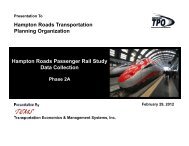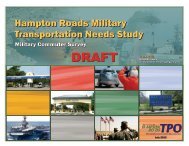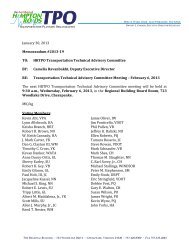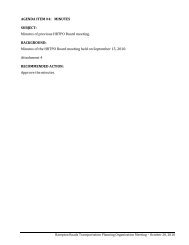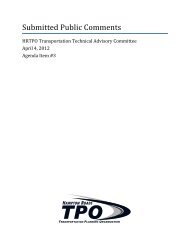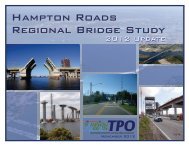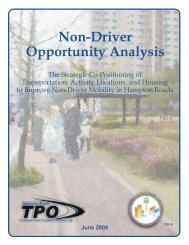Appendices - Hampton Roads Transportation Planning Organization
Appendices - Hampton Roads Transportation Planning Organization
Appendices - Hampton Roads Transportation Planning Organization
You also want an ePaper? Increase the reach of your titles
YUMPU automatically turns print PDFs into web optimized ePapers that Google loves.
Information Security Policy<br />
F. Due Care – Just, proper and sufficient care, so far as the circumstances demand; the<br />
absence of negligence. That degree of care that a reasonable person can be expected<br />
to exercise. That care which an ordinarily prudent person would have exercised under<br />
the same or similar circumstances.<br />
G. Fiduciary Responsibility – The legal relationship that gives rise to duty to act on<br />
the behalf of another with the highest standard of trust and good faith.<br />
H. Good Faith - A state of mind consisting of faithfulness to one’s duty or obligation;<br />
absence of intent to defraud or to seek unconscionable advantage.<br />
I. Maritime Facility - Any structure or facility of any kind located in, on, under, or<br />
adjacent to any waters subject to the jurisdiction of the U.S. and used, operated, or<br />
maintained by a public or private entity, including any contiguous or adjoining property<br />
under common ownership or operation.<br />
J. Need-to-Know – The legitimate requirement of a person or organization to know,<br />
access, or possess sensitive or classified information that is critical to the performance<br />
of an authorized, assigned mission (i.e. a VDOT related project). The necessity for<br />
access to, or knowledge or possession of, specific information required to carry out<br />
official duties. Information that is intended for use only by individuals who require the<br />
information in the course of performing their job function.<br />
K. Operational Security - A process to deny potential adversaries information about<br />
capabilities and/or intentions by identifying, controlling and protecting sensitive<br />
information. Frequently referred to as OpSec. The CII/SSI policy integrates OpSec<br />
processes into the way VDOT protects its sensitive information.<br />
L. Originator – The person originating the information and authorized to assign the<br />
value of CII/SSI asset; the person who has been assigned to exercise the organization’s<br />
proprietary rights and fiduciary responsibilities for the CII/SSI asset in question.<br />
M. Proprietary rights – Pertaining to property ownership and rights associated with<br />
ownership (i.e. possession, control, use).<br />
N. Protected System – Protected system means any service, physical or computer<br />
based system, process, or procedure that directly or indirectly affects the viability of<br />
VDOT and includes any physical or computer-based system including a computer,<br />
computer system, computer or communications network, or any component hardware or<br />
element thereof, software programs, processing instructions, or information or data in<br />
transmission or storage therein, irrespective of the medium of transmission or storage.<br />
O. Public Knowledge – Information about which knowledge or use is accessible to the<br />
general public if there has been no deliberate attempt to keep it hidden or secret.<br />
Knowledge that is available to anyone. Something might be considered public<br />
knowledge if it could be seen in a public area versus being located in a locked or nonpublic<br />
area. In some instances, the object itself may be public knowledge but it’s<br />
location or use in that specific instance is not (e.g., an electrical panel in a reception<br />
11



